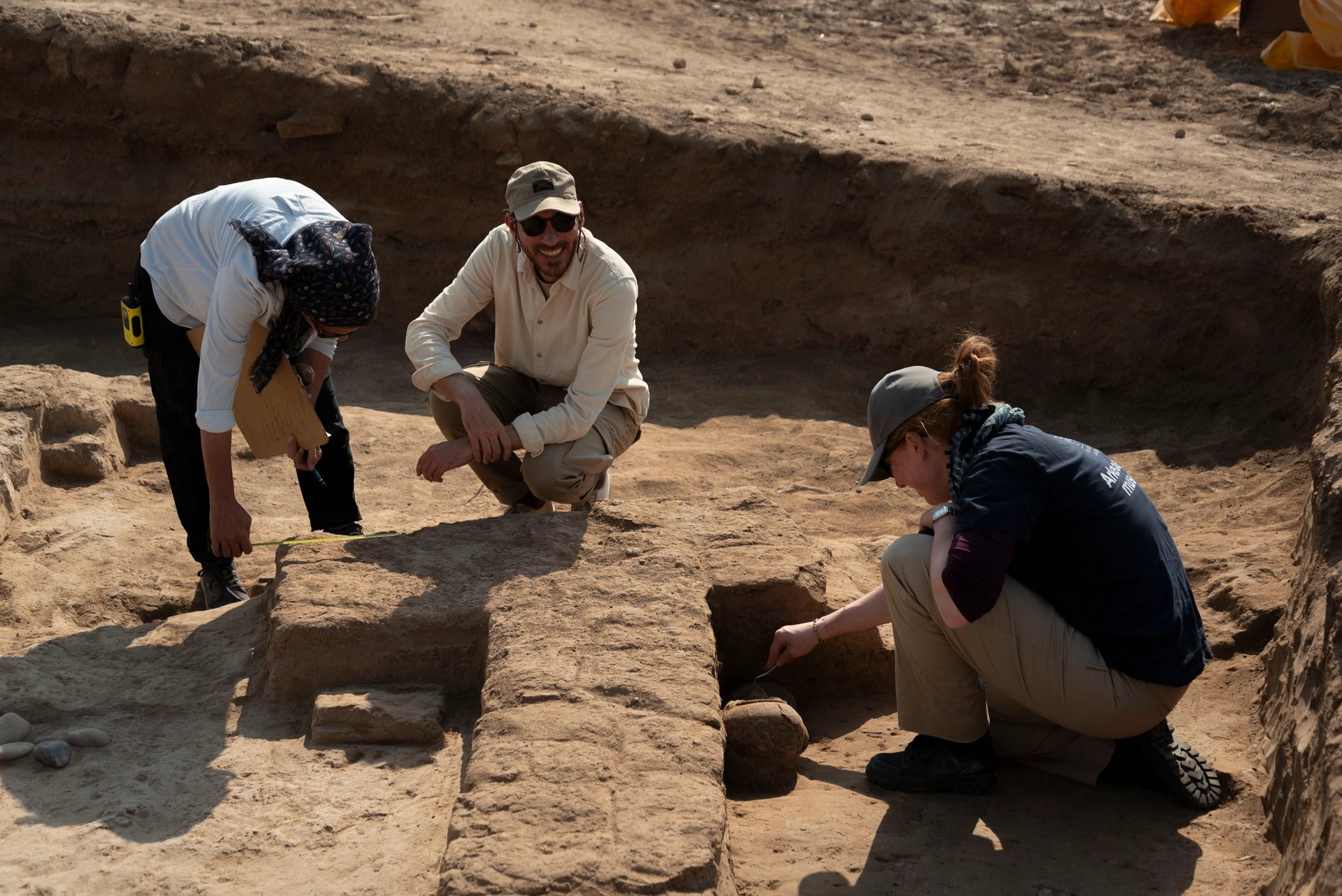A workforce of archaeologists in Iraq, led by the British Museum’s curator of historical Mesopotamia Sebastian Rey, has uncovered compelling proof of the empire’s formidable forms. The invention, first reported by the Observerearlier this week, was made final autumn at Tello in southern Iraq—the fashionable Arabic identify for the traditional Sumerian metropolis of Girsu—and contains greater than 200 clay cuneiform tablets and 60 sealings.
The tablets include particulars about the whole lot from scholarly texts to sheep and barley rations. They date again to the Akkad interval (2300-2150 BC), which, Rey tells The Artwork Newspaper, was “an especially essential interval in Mesopotamian historical past—that includes charismatic kings akin to Naram-Sin, the primary to proclaim himself divine—and a vital second in world historical past, because it marked the rise of the very first recorded empire.”
Among the many clay tablets are faculty texts, says Rey. “These are the stays of the scribal coaching course of for the directors of the state’s archives below Akkad imperial rule. It’s a superb discovery!”
The sealings, he says, are damaged impressions on clay of the seal of Lugal-ushumgal, the governor of Lagash, a metropolis near Girsu, who was immediately appointed by Naram-Sin and reported to him. Utilizing the fragments Rey and his workforce have been capable of reconstruct all the seal, revealing textual content that reads: “Naram-Sin, the mighty, god of Akkad, king of the 4 quarters (of the world): Lugal-ushumgal, the scribe, governor, your servant.”
“It says all of it,” Rey continues. “Complete management.”
Some artefacts discovered on the website—on a mound generally known as Pill Hill—additionally reveal, Rey says, a normal metric system used throughout the empire (the Akkad-gur) to measure portions of assets akin to flour, in addition to proof of the “propagandistic programme and cult of persona” round Naram-Sin. On one clay pill, for instance, he’s proven carrying a horned crown, resembling, Rey provides, “a god-like determine”.
A clay seal that includes an impression of the Akkadian governor Lugal-ushumgal
© The Girsu Challenge. Photograph by Alberto Giannese
Rey describes the invention, in its totality, as resembling a “toolbox of empire”.
Tobin Hartnell, the director of the Heart for Archaeology and Cultural Heritage on the American College of Iraq in Sulymaniyeh, says of the finds: “These tablets present stability to the archaeological document, because the Akkadians are higher identified for his or her warlike tendencies as expressed by artwork and royal inscriptions. These finds additionally offers extra context on how the Akkadians administered their empire, as many earlier tablets got here from looters however these finds come from the positioning itself. Lastly, these finds reveal how the Akkadians managed a Sumerian metropolis, particularly one situated on the frontier of the empire itself.”
Taher Quinn, an archaeologist from the State Board of Antiquities and Heritage (SBAH), which labored on the positioning with the British Museum, says: “These discoveries, with their info, will as soon as once more deliver to gentle the achievements of the individuals of Mesopotamia hundreds of years in the past, achievements that point may neither overcome nor conceal.”
An city treasure
Girsu, Rey says, is likely one of the nice treasures of Iraqi heritage. At its peak within the third millennium BC—from round 2600 BC to 2200 BC—it was a megacity overlaying a whole bunch of hectares, and revered as a sanctuary of the Sumerian heroic god Ningirsu and megacity. The town additionally “revealed to the world the existence of the Sumerians, who invented writing on the finish of the fourth millennium BC”.
It was excavated by a workforce of French archaeologists within the late Nineteenth and early Twentieth centuries however, says Rey, “a lot of the stays have been unearthed at nice pace and so they have been poorly recorded”.

Sebastien Rey and his workforce at Girsu
© The Girsu Challenge. Photograph by Ellie Atkins
The brand new excavations have been made as a part of the Girsu Challenge, led by the British Museum in partnership with SBAH. One of many goals of the challenge, which is funded by the Meditor Belief, is “to return to those late Nineteenth- and early Twentieth-century excavations to salvage what was left behind”, Rey says, and reinvestigate it. In contrast to the artefacts unearthed in colonial instances, the newly found artefacts will stay in nation on the Iraqi Museum in Baghdad.
The Girsu Challenge builds on the legacy of the Museum’s Iraq Scheme, developed in 2015 and first funded by the British Authorities in response to the destruction of heritage websites in Iraq and Syria by Daesh (or Islamic State). It goals to handle the injury attributable to early excavations and fashionable looting by way of new expertise and “rescue archaeology.”








